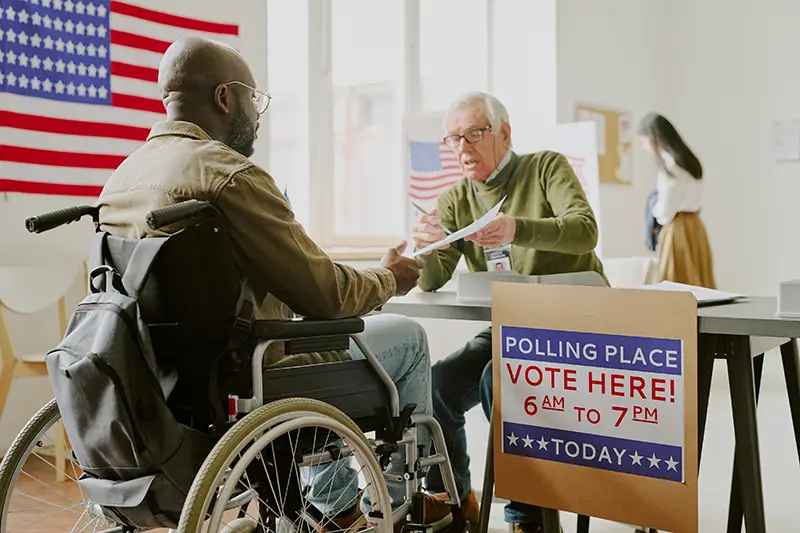Voters with disabilities have become a powerful and influential force in U.S. elections, increasingly shaping political conversations and demanding that candidates address their needs. While people who use wheelchairs face unique barriers, they are part of a broader coalition of voters with disabilities whose collective power continues to grow. This group includes individuals with physical, cognitive, and sensory impairments, all of whom encounter specific challenges when it comes to voting. But together, they represent a significant voting bloc with the potential to impact the outcome of elections at both local and national levels.

A Growing, Collective Voice
In the 2020 election, 38.3 million people with disabilities were eligible to vote, accounting for about 16% of the electorate. This represents a major demographic, one whose voice is critical for advancing issues like accessibility, healthcare reform, and employment rights. Thanks to increased voter engagement efforts, turnout among voters with disabilities rose to 62% in 2020, narrowing the gap between disabled and non-disabled voters to just 6 percentage points. This progress highlights the rising influence of the disability community.
For wheelchair users in particular, barriers to voting can be even more pronounced. Polling stations with limited physical accessibility, lack of adequate parking, or long wait times pose significant challenges. Despite these difficulties, wheelchair users alongside other voters with disabilities have become increasingly vocal about the need for more accessible voting options, such as mail-in ballots or expanded early voting, both of which help increase participation.
Policy Priorities for People with Disabilities
While people with various disabilities share common concerns, wheelchair users often prioritize issues related to physical accessibility, transportation, and independent living. The need for better infrastructure to ensure that public spaces are accessible, more reliable paratransit services, and affordable housing options designed for those with mobility impairments are central to their advocacy efforts.
In addition, healthcare and long-term services continue to be major concerns. Many voters with disabilities, particularly wheelchair users, are focused on preserving and expanding programs like Medicare, Medicaid, and Social Security Disability Insurance (SSDI), which provide crucial support for managing the cost of living with a disability.
Representation and the Road Ahead
Although there has been progress, people with disabilities remain underrepresented in government. Figures like Senator Tammy Duckworth, who is a wheelchair user and a strong advocate for disability rights, have helped raise the visibility of the community's needs, but there is still much work to be done. Greater representation of people with disabilities in office could lead to policies that better reflect the lived experiences of wheelchair users and others with disabilities.
At the same time, advocacy groups like Disability Rights Iowa and Disability Victory are working to ensure that candidates at every level of government address the needs of disabled voters. By organizing forums and increasing voter engagement, they are helping to ensure that disability rights remain at the forefront of political discussions.
Call to Action: Make Your Voice Heard
For voters who use wheelchairs and others in the disability community, participation in elections in critical to advancing accessibility and disability rights. Whether it's advocating for more accessible polling places, expanded transportation options, or better healthcare, every vote counts in pushing for change.
If you're a voter with a disability, make sure you're registered, and take advantage of mail-in ballots or early voting options if they're available in your area. Your voice is essential in shaping a more inclusive and accessible future.
Visit CanIVote.org for more information on registering to vote and making sure your vote is counted.
Most of the stories here on LiveQuickie.com were submitted by readers. Do you have a story to tell? We'd love to hear it. Submit your story here.